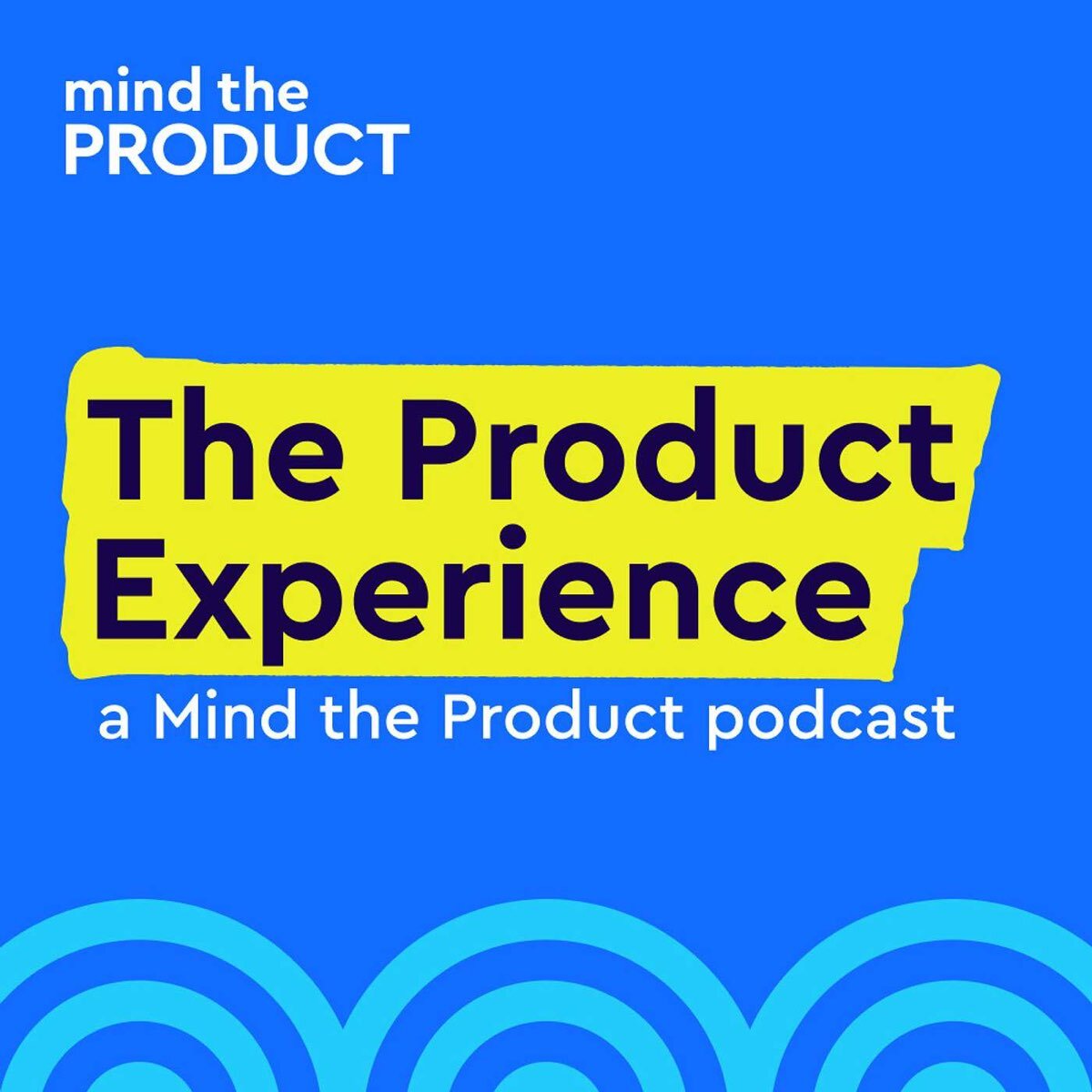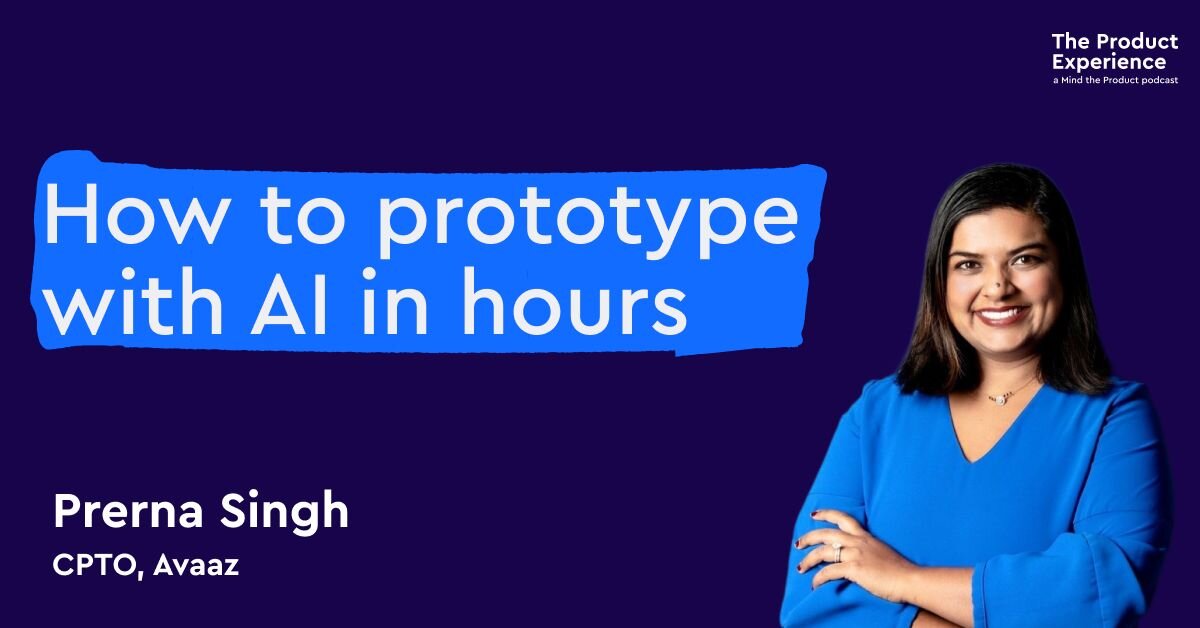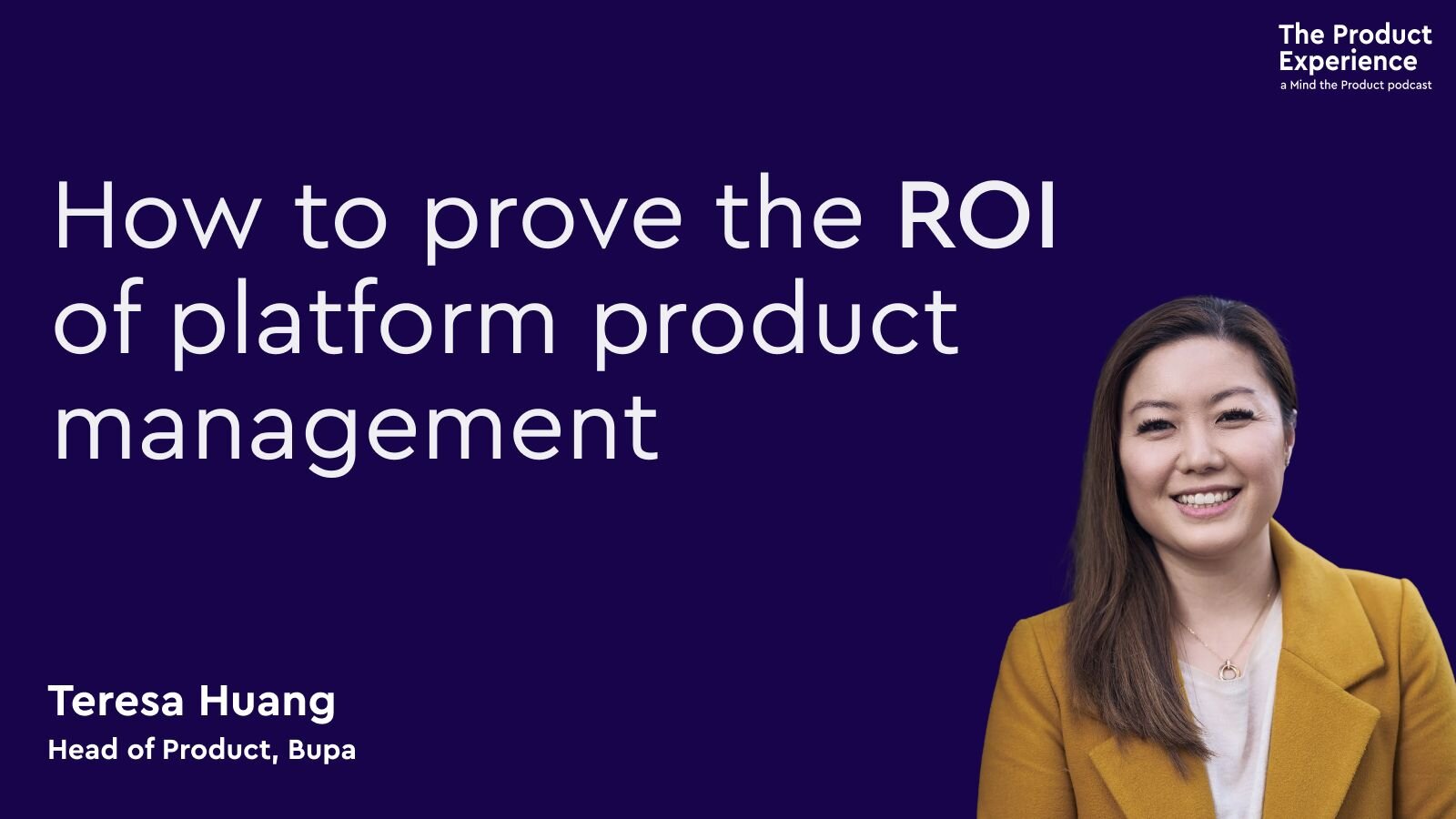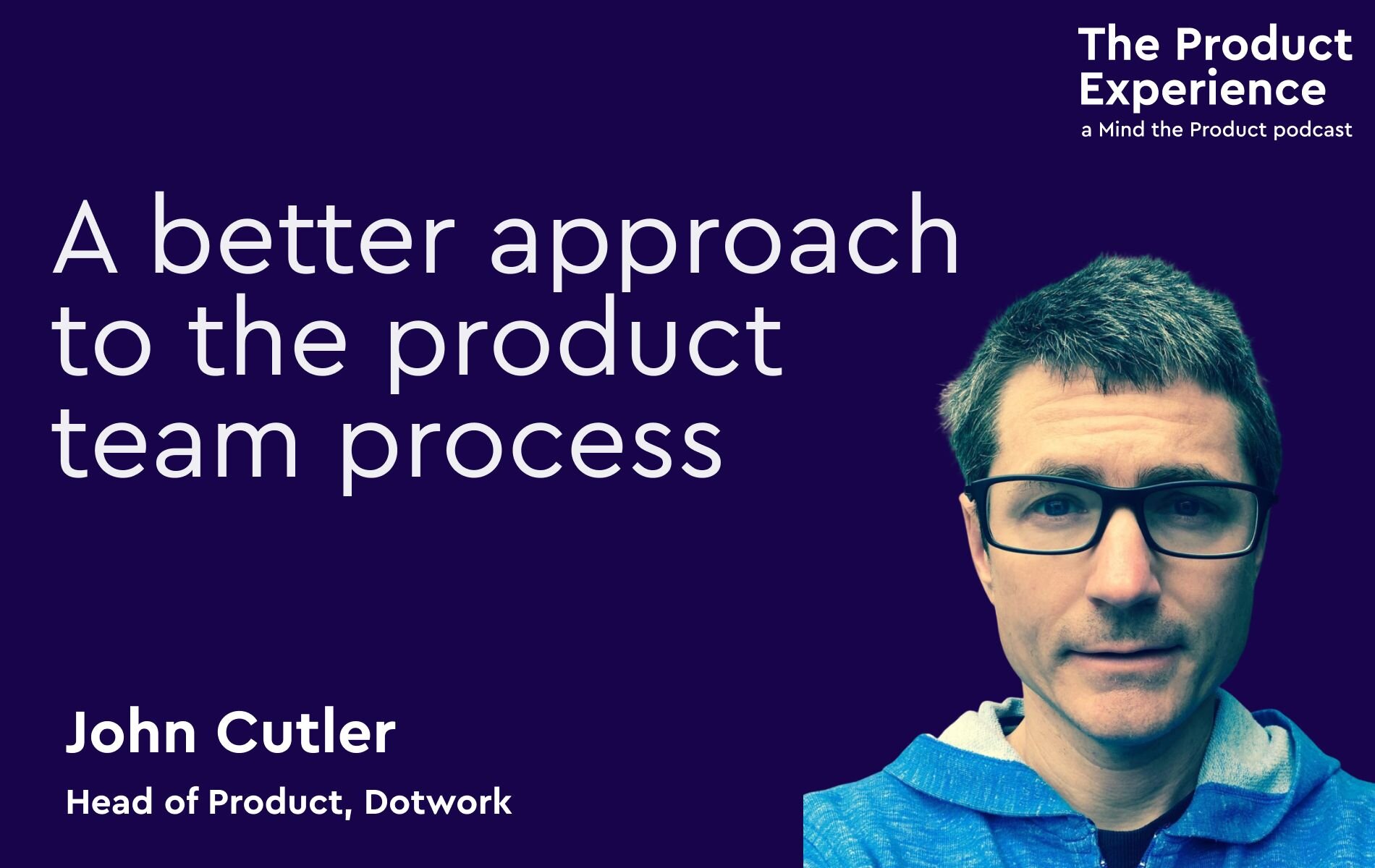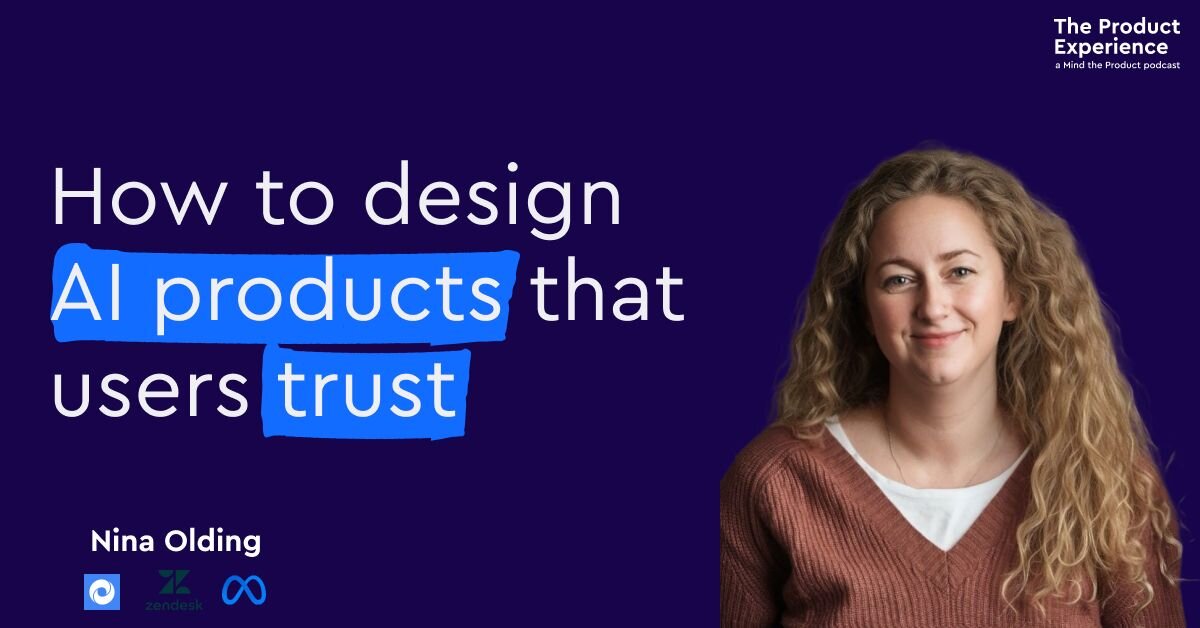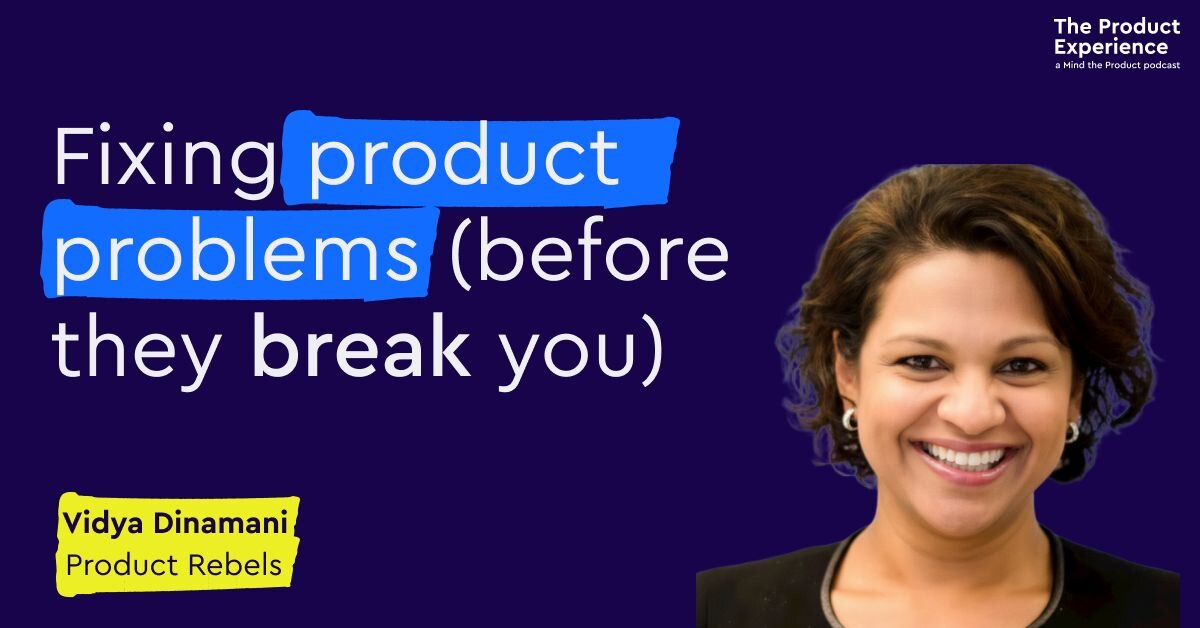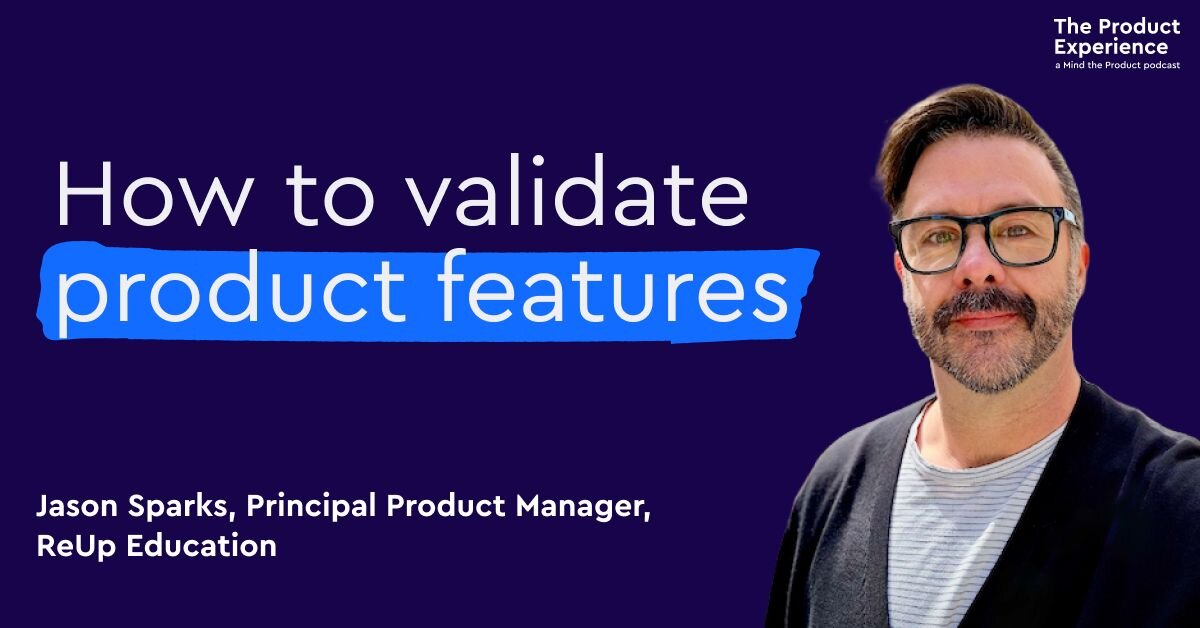It seems like everyone on the product scene is about launching brand new products in large organisations, however on this weeks podcast, we speak with Ben Sehl, Senior Product Lead from Shopify to hear his thoughts on doing this in the most effective ways.
Featured links
Featured Links: Follow Ben on LinkedIn and Twitter | Shopify CEO Toby Lutke on Twitter | Hydrogen | Hydrogen – StackBlitz | 'Transparency, participation and collaboration: the distinguishing principles of open source' feature | Shopify's GSD Framework
Episode transcript
Lily Smith:
So, Randy, we have an unintentional theme developing in our recent podcasts, launching products in big organisations, it seems that everyone is doing it or perhaps they always were, and we just didn't know.
Randy Silver:
Yeah, really? I'm pretty sure it's the latter. I mean, it can be a massive challenge to get something new out the door to global mega Corp, but has been done once or twice.
Lily Smith:
Okay, well, now the cats out the bag. So if you're one of those PMS launching top secret brand new products,
Randy Silver:
or even if you just want to be one of them,
Lily Smith:
then this episode is just for you. Today, we hear from Shopify Senior Product lead, Ben Zell, who's been working on their recently launched hydrogen framework,
Randy Silver:
Ben's got a really interesting background that I'm not going to spoil, especially as he talks about it right up front in the interview, so Cue the music.
Lily Smith:
The product experience is brought to you by mind the product.
Randy Silver:
Every week, we talk to the best product people from around the globe about how we can improve our practice, and build products that people love.
Lily Smith:
Because it mind the product.com to catch up on past episodes, and to discover an extensive library of great content and videos,
Randy Silver:
browse for free, or become a minor product member to unlock premium articles, unseen videos, AMA's roundtables, discount store conferences around the world training opportunities for
Lily Smith:
mine, the product also offers free product tank meetups in more than 200 cities. And there's probably one for you.
Randy Silver:
Ben, thank you so much for joining us on the podcast this week. Thanks for coming.
Ben Sehl:
Thanks for having me.
Randy Silver:
So, very quickly, I know we're going to dive into a bunch of this. And it's kind of the whole reason we're talking today. But tell us a little bit about your background. And how did you end up at Shopify?
Ben Sehl:
Yeah, so a bit of a bit of an odd background into product as but I think that is a pretty common theme amongst everyone in product. And in an odd background into entry into Shopify. So I actually originally applied to Shopify a little over eight years ago, as a theme designer, I had a background in design, and I didn't get the role. But at the same time, I had started up this side project, making an apparel company, and I thought, Well, I'm gonna make this website for it using a custom liquid theme. And then I'm gonna apply and end up getting a little carried away with that. And eight years later, I grew that company to about 60 employees with with my wife and other co founder, and then just last year, decided to chat with Toby and apply again, and sort of coming through that way.
Randy Silver:
So what made you make the decision? So you, as you said, your ears in you've got 60 People that sounds like a pretty successful company? Why make the jump?
Ben Sehl:
Yeah, why. So I've always been a really curious person. And one of the things I really loved about entrepreneurship overall, was just this ability to learn and tackle and get get in front of so many different types of problems. And I really just love technology overall. And I always have, and there were so many cool, fun technology problems that I got to dive into that, and the breadth of which, you know, wouldn't have been typical in a normal role well as a founder, but apparel really only has so many different technology problems to tackle and, and I also found myself sort of looking for the ability to, you know, learn from from other great people. And over the years, I met so many different folks at Shopify, and product and engineering and design. And, you know, at one point, I think I was meeting with with product people, like a few times a week, just providing feedback and saying, you know, what, my different challenges were and so yeah, just it was always something that really aligned to me philosophically. And entrepreneurship as well. To me was really sort of moment in time where I went from looking back really like a fixed mindset to a growth mindset and just opened up so many different opportunities to me, so I was really passionate about helping others be able to have that opportunity. And then really just get to dive into some nerdy or tech and and solve some fun challenges.
Randy Silver:
And you built cotton, the apparel company, the at least the E commerce side, using Shopify, that was your primary thing. So you went from being a customer of Shopify and customising the storefront using their technology to being the product manager for the same technology.
Ben Sehl:
Yeah, similar so for about for a long, long time up and still today. The main way to build storefronts on Shopify is this language called liquid which was also invented by Toby. It's a templating language. And the under the hood Tech has changed in a long time, but it's is really, really great language. And it makes it so, so simple. But I ran into all these different use cases where I was trying to do these really specific things. And it got just really hard to do them. And so a few years ago, I made the decision to go headless, which is where you use more of a API first approach, and consume that. And then you build everything else yourself. And it sounded great. And then what I'm finding was that I was spending most of my time doing stuff that I wasn't really excited about, kicking off on, and there are all these different challenges with with doing it. And then a little over a year ago, I had a call from Toby and some of the folks that were working on this new thing called hydrogen, which was going to be their opinionated way to build this out. And so that really just appealed to me. And I got so excited. And con was at a point where I felt like I could leave and everybody would be okay, it was more in leadership, less doing the actual things. And so yeah, took the jump, and now for the last seven months have been leading product for hydrogen and building out this wonderful developer experience for making custom storefronts.
Lily Smith:
So you're now kind of solving all of the problems that you were having before as a customer of Shopify. Have you literally just written yourself like a little list of these are all the things that I really wanted to be able to do? And then go on with that? Or have you taken a broader approach?
Ben Sehl:
So so this is the actually this actually sort of gets into the challenge. A year ago, the first one, I found out about it, because they were asking me for feedback on on alpha. And so at that point, I did write, I tried to build out some different stuff. And I wrote this list. And I carried that through to when I started, because I wanted to see where where they've gotten to on that. And but you know, one of the biggest challenges is coming in, I had a few insecurities. One is, I don't have a huge product background, I wasn't at you know, all these different places doing product for a long time. I was really specific on Shopify for the last decade. And technology's changed a lot in those last 10 years. And, and then the second was feeling like people were going to think, Oh, this guy's just gonna do what what he wanted for cotton, and not really listened to what was better for the whole. And I mean, as any good at pm knows, you know, you don't want to just fall for the one customer. And so I actually make a sort of anti goal of mine and went a little bit overboard in doing customer research and interviewing different merchants. I think in the last seven months, I've met over 150 different customers, building on the platform to get feedback and understand, you know, what's happening and what things were unique to us what were shared. But it certainly helped hone in an intuition around where to look. And I will say that I have gone back to that original feedback doc a few times and just seeing all right, well, where are we crossing things off and doing doing a pretty good job so far?
Lily Smith:
So you've interviewed 150 different merchants? Did you find it? Because one of the sort of rules that people are one of the sort of questions that a lot of people have is like, how many people do you need to interview before you get to like the most common insights? And I think, I think there's like a kind of rule at some point, someone said, You interview five people, and you get like, 80% of the answers or something. So
Ben Sehl:
Google Design Sprint, right.
Lily Smith:
So did you did you find more information from interviewing more than five people? Well,
Ben Sehl:
so here's the interesting thing is when I joined, we were in version 0.6, I think, and we've released a new update every week since so there's always new problems that come up. And then more and more folks that come on. And of course, his product going Zero to One, I'm trying to also figure out how do we get traction as well and get people convinced, and we're solving problems for really, really large businesses who have to take huge bets, you know, on stuff that doesn't exist in production yet. And so, you know, how do you do that? So really, and then the third challenge is that salespeople really don't know how to talk to it. It's, it's hard enough for me to talk about it. So. So join a lot of those calls. And it really to me, yeah, do I find new information? Depends. Not every call is super worthwhile, but I do get little nuggets. And what has been really cool is, as I've gone along, it's the people that I've gotten the great nuggets from have been consistent. And so then some of the interesting things that we've done, which were new to me, were setting up, for instance, shared Slack channels with a few of the key merchants that you know, really were providing valuable insights and leaving them to have a lot more ongoing feedback. Certainly, as a merchant, myself, I was witnessing product research is coming in, and they're sitting with us for an hour and they're saying, hey, talk to us about problem XYZ, and then it's whoever is in the rooms, you know, most rare He sent, you know, version of that problem, cover at a fairly surface level, and then they leave. And then you remember the real problem like two days later, but then you don't follow up and so. So that's been a really valuable thing to get that nuance and insight and be able to have more of a back and forth and product value of building an open source framework as well as has been able to keep that dialogue ongoing.
Randy Silver:
So you've come from a design background, you're working with a developer framework, now. You've got all this information, you can create hypotheses, how do you test them? It's, you know, the traditional tools that we talked about for most things of doing wireframes, or fake doors, or Wizard of Oz, or concierge, or all these other things, that doesn't really apply here, you actually have to build stuff before you can test it, or how do you validate?
Ben Sehl:
Right? So there's a few different things here, I think, coming from a design background, building developer tools already a bit of a hmm, you know, on that note, I've always been of the design is how it works mind. I was very fortunate in my, in my early career to join this firm called Bruce Mau design, that was very much forward thinking in terms of service design, and human centred design and a bunch of these different approaches. And, you know, where often I'll see visual design sort of take the big chunk of what that design ends up meaning. And yet everyone sort of talks about content design and content strategy being so critical to be foundational, but it never really seems to get enough of a seat at the table. Well, fortunately enough with code, of course, you only have language, and so that that does happen, which is really great. And then there's just a huge amount of design inside a framework itself inside of code inside of creating API's that are intuitive and consistent. And you know, and then as it comes to the how do we actually suss out? Is this going to work creating prototypes? There are analogues for this and open source and encode, right. So there's RFCs are a very common practice. So developing, you know, how we might approach the problem, one articulating really what the problems are to then creating a number of different solutions and creating an RFC and pushing it out into the public, as well as into internal stakeholders to really gather feedback. And just distress.
Randy Silver:
No prompt, just kind of intro to RFC, comment,
Ben Sehl:
request for comment. Yes, exactly. Started a little, little jargon. And so that RFC process is really key. And that's, that's been been huge to religious design out, sort of working backwards style, what is the API design that we imagine? And then, and how might someone interact with this thing, and then we can start to work in terms of the internals, and really suss out such things out. Another huge thing is, you know, well, what problems should we be working on at all? And that, and, you know, do we have the right aim in terms of clarifying what those problems are. And that's been a very interesting thing, especially as it relates to my design background, because there's a thing at Shopify that we do called product sessions, and product sessions are most similar, from my background to design sprints. And it's really, if you're familiar with Ryan, singer, and the base camps, folks around the hill chart, it's kind of like you're climbing the hill on the problem and trying to make sure that you have a good grasp of, of everything that you're trying to go encounter. And then the the product session comes in to say, let's get some different folks, you know, above you in different parts of the org folks who might have really great insight into what this problem is, and then have them all really ask the questions around, is this the right thing? Are we thinking about it the right way? What things might need not know about what previous work might exist already at Shopify that we could leverage? You know, have you talked to everybody who you need to talk to. And so then you're sort of, you know, to use the hill analogy, it's like, crossing the clouds there as you're going through the hill. And it's very easy to actually Mount Everest is still a few more peaks away. And it's, that's been a very interesting thing, because it's very much not like what I've read in terms of product and these different processes. But as something that's original at Shopify, that I found to be very, very impactful and allows you to also move really quickly just knowing that there's there's confidence that we're all making the same bet together and that there's enough perspective in the room to to really feel like we have a good enough sense of the problem to move forward.
Lily Smith:
So who's coming to those is that other product managers that are not involved in the day to day like thing that you're working on? Or is that your product team?
Ben Sehl:
So it depends on the scope of the problem. We have them in our organisation of customers, storefronts weekly and And then different folks can sign up with what they want to talk about. And depending on that issue, it's usually a fairly recurring group, to really just make sure there's alignment around the group. On some larger topics, there was one I held in in March that I asked to pull in folks everywhere from, you know, the heads of marketing for our or the overall or to, you know, the head of storefronts and people from the analogous teams in liquid the other the other way of building storefronts, engineering, etc. And anyone who you think might have insight into how to solve this challenge. Sometimes I'll even field who those invites might be just talking to my lead and saying, hey, you know, who might have some some interesting perspective on this area. So it can really change. And I think one of the interesting product principles that we have is this idea around knowing what you're building is that, you know, infrastructure, a feature or an experiment, and through those three different lenses, you might have, you're, you're sort of optimising for different things, and also compromising in different areas as well. And so, certainly more on the infrastructure side, you're building for the longer term, you're trying to aim as high as possible, you're really trying to make sure that this thing is like designed the right way, you know, then more towards the experiment side of the spectrum is, you know, you're intending to throw stuff out, you're really there to build something in order to learn what it will be through through the the side effect of of actually creating that thing. So yeah, so it can be a huge range, depending on what you're trying to accomplish.
Randy Silver:
I love the sound of these, but I've been in environments that are really collaborative, and I've been in environments that are, let's just say not so much. So I'm just curious as this, do you ever walk in there with a question? Are you ever worried about being judged about you know, who I we haven't done our research, we're asking everyone else to do our job for us? Or, you know, just coming up feeling like you're coming up a bit short? I'm
Ben Sehl:
not really. I think it depends. There's this concept of Shopify that I've grown to really love called the trust battery, which is, you know, you start every relationship with 50% charge, and then you work hard to build that trust. And because there's gonna be things you have to do to also drain a little bit of that trust. And certainly asking anybody to do something. Patents, maybe sometimes it actually charges interest battery further. But so I think, I think, you know, if you're to just call on some random person and say, Hey, you lead the product session with like, well, I want to do this area, but I don't know anything about it. And, you know, I think there's enough, there's enough weight around the meeting it depending on how senior folks are bringing into it to really want to make sure you're not wasting their time. And so typically, not also, even just preparing for that product session. If it's one with you know, a lot of different folks, you're going to want to cycle around that agenda beforehand, and just make sure that, hey, you know, is this right? am I covering the right things? Like, are these the questions that we should be talking about. And so some of that stuff is like, just pre pre session collaboration with, whether it's your engineering partner, if you're in product, or maybe your lead or whatever it is, but then overall, I think the, it always starts to with, when you're in that area, a great product session is much less like me, you know, it's not about using it as a checkbox to continue it's about using it as a place in which you're making sure that you've poked and prodded at this problem from all the right angles. And so the participants as well are in a place where they're there to say, you know, how did you approach this problem? Or were you thinking about this, you know, in this way, as opposed to I think this should be blue, very early mistake of mine was coming into one of the things with all that, you know, customer bias and everything, my first product session and saying, you know, well I think this thing should be this and this should obviously be like this, and why would we do this? This you know, and it was very you know, I drained a lot of trust in that in that meeting. And and since then, I've worked really hard to build that back with a different folks that were participating but also learned some valuable lessons around what not to do. So glad to have that. glad it happened early wish it didn't happen at all. But yeah, I heard from one of the last episodes you I can't remember who it was but doesn't really matter what someone tells you no matter how much they've learned and he sort of had to learn some some things from your secure yourself. And so unfortunately, that was one of the lessons I had to learn for myself.
Randy Silver:
We talked about product lead strategies a lot at mine the product, the idea is that the product just isn't part of the customer experience is the customer experience. Ultimately being product LED means the product becomes the vehicle for acquiring and retaining customers driving growth. and influencing organisational priorities.
Lily Smith:
That being product lead is more than just a buzzword. It takes real effort and practice and has the power to transform your business.
Randy Silver:
To help you kickstart or accelerate your product lead journey minder product are excited to announce a brand new certification course all about what it takes to be products led
Lily Smith:
brought to you in partnership with Pendo. This online course will help you deepen your understanding of product lead strategies, and what it means to put the product at the centre of your organisation.
Randy Silver:
Your in tactics and best practices you can use to take your company and your career to the next level.
Lily Smith:
You can expect three hours of engaging instructor led videos,
Randy Silver:
seven educational modules on the most important topics in product led growth,
Lily Smith:
a curriculum developed by industry leaders and product lead experts, which sounds awesome,
Randy Silver:
and an optional exam to check your knowledge and earn the certification badge.
Lily Smith:
The course is usually $149. But you can get it for free for a limited time. Oh MD, use the code go product lead to register now at mine the product.com forward slash go product lead.
Randy Silver:
And that code is go space product space lead the same as in the URL except there's no spaces in the URL just in the code.
Lily Smith:
So you've talked a bit as well about taking this product, hydrogen from zero to one. So Shopify has a massive number of merchants that use the store that use the platform. I don't even know how many it is. But I'm imagine it's a huge number. Yeah, if you're building a product for potentially, then millions of developers, how do you define like, what's the MVP? Or like, what's the thing you're going to launch with? Because I imagine there's a number of stakeholders within the business who are really keen on seeing this thing be successful. And you need to make sure that it has a certain level of functionality. Not I imagined, like that kind of minimum lovable product is the, you know, is gonna be the phrase that everyone's kind of kicking around rather than minimum viable. How have you kind of dealt with that, with it being a zero to one product within a huge business.
Ben Sehl:
So there's a few, there's a few things here that help us my huge fan of jobs to be done theory overall. And a similar product from like a decade ago of mine was working with not similar product, but a similar sort of story in terms of zero to one, I was working with this firm in the US that for social workers to help manage their caseload working with young children. And when we're there, one of the interesting things that we did was, you know, they didn't have any technological tools at all. So we did one of these site visits, and we walked around and worked with a different, you know, shadowed these folks for a few days to understand what their job was. And we noticed all the different artefacts that they had, and what tools that they were employing in order to get their job done. And so some folks, for instance, would have like sticky notes on their monitor, or these different types of things. And these were all like helpful cues to know. Okay, well, you know, this isn't actually in the software these today, but it is related to the job. And they're actually working around this in order to get all these things done. And so, you know, fast forward to now, people are still building these custom surfaces, they're using our API, they're using a bunch of different tools that aren't part of Shopify, they're using, you know, alternative frameworks and methods. But they are getting that done. And so there's actually quite a lot of prior art for us to look to to see, you know, what is that? What coverage is there? And then comes down to user segmentation. And so, one of the first decisions that had to be made is like, who are we building for, and with that that segment that we landed on for a first go was really around folks who were already on the online store and wanting to go headless, for a subset of reasons. What was nice vote, that was one we could make a selection of those reasons to address to, we already knew what they had available to them. Because liquids, simplicity is there because of its constraints. And so there's a very set number of features and a parody that we can match up to and, and we have data as well internally that we can look through to see how much usage is happening there. And within this cohort of larger merchants, we also weren't trying to solve for all 2 million it's liquid already exists. And it already does this great job. We're in fact trying to create this new product in order to allow that one to lean in more towards it, what it does well, and we hope that more and more people use that and the ceiling of that raises so that more people can actually stay in that product. Because as a whole with Shopify, it's better if you know that fewer people use RS so we can build a more focused thing. And then, you know, intentionally then looking at, okay, well now net new folks, there's a lot of things that we want to do to build for them. It's all for them. But we also want to make sure that we're solving for ourselves first. So, in doing that, then one of the strategies that I've I've really loved from from other design practices, as well as this idea of participatory design. And this is just huge in open source. It's the nature of it, of course. And so just really bringing in we, you know, one of our first, the first merchant really that started to build with with us was Albert's, which was a huge merchant for us at Shopify, one that we really love. And they have a really great team there. And so, you know, we have weekly status meetings where we're thinking and just understanding what, what are you struggling with this week? What are you trying to run into, that really helped us have this continuous discovery process to really understand what types of things are emerging that we didn't see coming, or they didn't anticipate as blockers but became blockers as well, we'd be able to get feedback on those RFCs while things were private, and we weren't even developer preview yet. But then, as we moved past that, and even though publicly, we were able to cycle things through and not just post them on GitHub, but also put them in our Slack channel, or, and whatever. And so that became huge. And that's then expanded to a lot more folks, there's a great team at butcher box with some fantastic developers there that have been giving us some really, really incredible insights, as we've been going to really refine things and just understand how we're going to challenge them. And then of course, the challenge with that is now you have these folks who who are served on the inside track, and you have to do the delicate balance of knowing which of their problems are we're solving now and, you know, are shared amongst everyone else? And which ones do you have to unfortunately, you know, backlog until later or find workarounds to so defining that minute, that minimum lovable product was really a challenge. And I don't know if anyone can ever say that they they loved it, certainly the you know, processes that you know, superhuman took what with with, you know, product, market fit, type work, or these sorts of things, this can work with a larger base, we had a very, very small group of folks internally relative to the millions building on Shopify, but really just came from, what sentiment? are we hearing from developers? What's the feedback that we're seeing on GitHub, you know, there's feedback on our API Doc's that people can say, helpful, not helpful and leave some comments. And sometimes those Get colourful. And so sort of taking a pulse on all that, and then really making a call. And then you know, a lot too is just sort of, here's what we're proposing, here's why we know it, and why we believe in this area and what we've done to go and prove it out. But being in an organisation that allows you to make that call, you know, at Shopify, we're data informed, not data driven. And so really leveraging data as a as another perspective towards the problem. The way I think about it as it's like, if you're a person on the earth, looking at the moon, you can only receive maximum half the moon, no matter how good your vision is. And so the more folks that you can have, from different vantage points, looking at that same moon, the clearer your picture is going to be if the whole thing and data is really like another, another vantage point, but it can have its own biases as well. So yeah, imperfect science. But sometimes you gotta just go with your gut.
Lily Smith:
And it sounds like there's a lot of things that you feel like you did, right or, or you did well, and that that worked well in order to launch that product. But it's always interesting hearing about the things that didn't go well, because that's kind of like when best learnings are. So if you were kind of starting again, on a very similar project, is there anything that you would do really differently? I feel like I'm interviewing you now. Like, this is not a job interview?
Ben Sehl:
No, it's a great question. I mean, I think, in some ways, I was starting again, because I had already built this headless storefront, while it cotton. And then even before joining, I had taken two months off, and with a friend, I end up launching a skincare brand where I actually built that on hydrogen so that I could get a good sense of what's it like now. And that's what developed a lot of those initial feedback points. And then every major milestone along the way, I've rebuilt that site with the latest version of hydrogen to see where we're at and just get it you know, my own two cents on it, and feel what was hard, what was easy, and what would I have done differently? I mean, you know, you never can go back and look at it, but I'd say I think given everything I don't know if I really would have changed much like bringing those early partners in that we had built, you know, strong trust with like all birds was just invaluable. I don't know I don't really have a good answer, because I not to say we did it. perfectly, but you know, if if we would have changed anything and solve for some of the areas that we you know, are still outstanding that we want to solve for, we would have had to make other hard cuts, and I don't think I would have been happy with those either. So I think at the end of the day, you're never going to be perfect. And you kind of have to be okay with that. And you have to know when to ship and then iterate. And as long as you can build trust with your community, and, you know, audience who you're building with, and just really engage them and be transparent, I think that's one of the foundational things as us with us, as well has been really just being really, really transparent. And thankfully, having the leadership backing to be able to do that as well. But that's been able to really establish trust with with with folks and letting them know, Hey, here's the exact problems we're going, you know, heading it on, here's how confident we are in solving them. Here's things we're not going to cover. And you know, that really helps things as well. So maybe I would have tweaked something here or there. But I think the overall philosophies just following the open source principles, honestly, I'd actually love to just see that brought to more areas of Product Management. And I think there's a lot that different folks can learn from that.
Randy Silver:
Do you anticipate any of that changing as hydrogen grows, I mean, those sound like pretty sound principles to me in general.
Ben Sehl:
So I think, you know, participatory design RFCs a lot of the processes and tenants of how we actually go and validate feedback, absolutely, some of the things that I think we're going to change in, like, adapts really are then from a difference of zero to one versus one to n. And so one to n now, you know, we are collecting more data, we're able to get more data points, we're able to, you know, build more robust perspective there. And then separately as well pre zero to one, we were able to move really, really fast from able to make breaking changes every week, if we wanted to, you know, there's there's not really that much of a guarantee around what's happening. One to n is now much more of a deliberate process, it's much more of a rewiring and reset, say, okay, you know, we're live now people are, depending on us, we have to keep these API stable, we have to, you know, one of the one of the things in terms of strategy was, hey, we just spent, you know, the last, you know, since I've been here, seven months, shipping insanely fast and building all this stuff. Now, the strategy has to sort of one ad and take more of a snow leopard strategy. If you get the MacOS reference, which is really let the dust settle, respond quickly to bugs and fix those don't introduce a whole new bunch of features, people have to get used to what is there and really just trying to empathise with those users and listen to them. And then And then really, also, any new framework is going to have a lot of uphill battles as it tries to build trust, and, you know, get over that. Find people beyond the early adopters. And that is a place in which we feel like, we can do that just by really exceeding expectations on support and responsiveness and really engaging with the community taking people seriously. So I think all those things are certainly true. So it's, it's, you know, attitude, same attitude, but now, different execution, I think,
Lily Smith:
and one of the things that seems really critical to the success of the project that you've worked on is like you say, keeping in really close touch with your community and kind of managing that communication with that small internal group that you started with. And then as you build out to the broader community, how has that kind of formed like part of your team and your strategy, because I imagine, like, there's a certain amount of that, that kind of contact that you want to do yourself, but then, at some point, with 10 million customers, you're gonna get, like too much communication going on, and you won't be able to answer everybody's queries. So how do you manage that kind of flow of communication and stay in touch with the things that are coming through the themes that are being fed back to you, but without being overwhelmed with, with information?
Ben Sehl:
Yeah, I mean, so when I started cotton, we're starting with building a white t shirt, which has been done a million different times and need stand no chance of beating any Goliath in the world, because they have all these scalable systems. One of the things you know, I think it's Paul Graham was like the dude things that don't scale. And so just being really attuned to where you are, and not being afraid to reinvent your systems, and then leaning into what that you know, what that position enables you to do and what, you know, what threats it imposes, what opportunities it creates, or, you know, I think, I think really valuable and then you can always reinvent the wheel. Um, in terms of the team strategy. One of the things here, there's two terms at Shopify that I think are interesting one is this idea called the trifecta and you know, typically, this is one of the reasons why I never really thought I wanted to go into becoming pm was the idea of you know, pm is the CEO of the product like that was never really appealing to me, I never wanted to be a CEO, it just didn't sound like very much fun. And at Shopify product is you know, one of it's like a tripod. It's you know, Product Engineering, and UX all sort of form. These equal individual parts that are responsible for different areas. And they do somewhat roughly map to human centred design of usability, desirability, and feasibility. But then beyond the trifecta is this idea of the multifactor, which brings in support and marketing and developer relations and all these different things. And so really, in trying to think about how we launched and how we, how we respond to the community, certainly, technical writers for writing documentation was going to be a vital importance, we're only as good as our Doc's enable us to be having a really great developer relations team and working super closely with them to build, you know, examples. There's no StackOverflow for something that doesn't exist yet. So you know, having to work ahead of that and create examples and resources for people to learn from and really engage community as they're starting those initial 1000 true fans are really, really critical to the success. And then super aligning products with marketing goals is critical as well, like, are we focused on the same objectives? Are we fully aligned, are we positioning ourselves in a way that is both, you know, understandable by business stakeholders, but also relevant and meaningful for developers who are you know, oftentimes fed a lot of BS that doesn't come across as being fair resonant with their struggles. So I think that was really the one thing that I also sort of found really engaging and exciting being here, because it kind of brought me back to some of those original start days, even now that I'm at a company much, much larger than a startup, it was sort of a startup within this large company. And thankfully, as well, there's like, so few policies, practices, and that sort of thing that are enforced at Shopify, one of the downsides is a lot of teams have to reinvent the wheel, but one of the best sides is you really get a lot of breadth of perspective. And you you get to shape things that fit really well for your problem and your team and, and what you're coming up against. So some tools like product reviews fit into that mould, some things like we have this process called GSD, that helps just define the scope of a project in terms of some rough benchmarks of prototype, think, prototype and build. And but you know, other than that, things are really left up. So yeah, so that, I think, what we've done, the work has gotten us here won't get us to the next stage, and we'll have to reinvent again. And we'll have to continue to do that and come up with new approaches scale up new teams to design new systems, but you know, just being nimble and being aware, and, like this other thing that's been kind of interesting to discover over time is this idea of, you know, what type of an environment to thrive the most. And, you know, there's, there's ideas like, you know, the founder, the settler, the city builder, you know, the nation builder and these are different scales of Team organisation company, that you may do well and multiple you, you may do well in just one and being okay with that. And, you know, leaning into that is something where you can really then help your product succeed.
Randy Silver:
Then you've dug into about five or more things that I really want to ask but we have run out of time for tonight. And maybe we'll have to do a follow up sometimes they are not GSD and some of this other stuff. But thank you very much. This was really interesting. And yeah, we really enjoyed the
Ben Sehl:
chat. Hey, really love it. Thanks so much for having me. It was an honour.
Lily Smith:
Thanks Ben. The product experience is the first and the best podcast from mine the product. Our hosts are me Lily Smith,
Randy Silver:
and me Randy silver.
Lily Smith:
Louron Pratt is our producer and Luke Smith is our editor.
Randy Silver:
Our theme music is from humbard baseband power. That's P AU. Thanks to RNA killer who curates both product tank and MTP engage in Hamburg and who also plays bass in the band for letting us use their music. You can connect with your local product community via product tank, regular free meetups and over 200 cities worldwide.
Lily Smith:
If there's not one near you, maybe you should think about starting one. To find out more go to mind the product.com forward slash product thank you.
